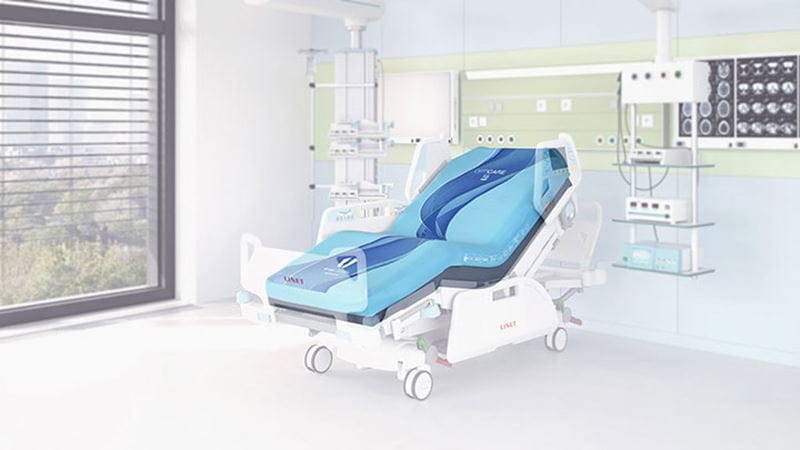Take the pressure off

Since pressure ulcers mostly affect people who are confined to bed or in a wheelchair for long periods of time, the design and materials of the surfaces they come in contact with are of the utmost importance. This is something on which the team at the Trelleborg facility in Nottingham, England, is an expert.
The company develops and manufactures engineered polyurethanecoated fabrics, specially developed for medical support surfaces. The polyurethane enables the textile to stretch in ways that allow a mattress or seat to redistribute pressure.
“The mattress or wheelchair cover is the point where skin meets fabric,” says Richard Haxby,Technical Director for Trelleborg’s support surface-fabrics. “The stretch properties of the fabric are vital in releasing the full potential of the support surface. If the fabric doesn’t conform to the contours of the patient, neither will the support surface.”
The fabrics are breathable, meaning the moisture produced by the patient can move through the textile. This helps to keep an individual’s skin cool and dry.
“The fabrics offer excellent abrasion resistance to withstand handling and hard wear, as well as resistance to damage from the aggressive cleaning agents that are used in hospitals and other care settings,” he says, adding that the textiles are also used in blood pressure cuffs, tourniquets, gowns, aprons and other medical equipment.
Equally important in suppressing the development of pressure ulcers is the core of the mattress or seat. The basic requirements are similar, but the emphasis can differ depending on the clinical needs of the patient.
“A wide range of materials are used in the core of a mattress, from basic slabs of foam to shaped foam, viscoelastic foam, gels and air bladders as manufactured by Trelleborg in Monson, Massachusetts, in the US,” Haxby says. “Different materials bring different performance properties to a medical device.”
To understand the needs of the market and how to incorporate them into products, Trelleborg is actively engaged in the medical device industry. The company works with American and European committees on support surface standards, dedicated to improving the quality of life for the bedbound and wheelchair users.
One challenge with polyurethane chemistry is finding the perfect balance between breathability and durability. Improving moisture vapor permeability has meant reducing the resistance to hospital cleaners.
“Working closely with our polymer suppliers, we have developed a new product that is both highly breathable and durable,” Haxby says.
The new product hit the market at the end of 2022.
This is an article has been reproduced from Trelleborg's T-Time magazine. To download the latest edition, go to: www.trelleborg.com/t-time